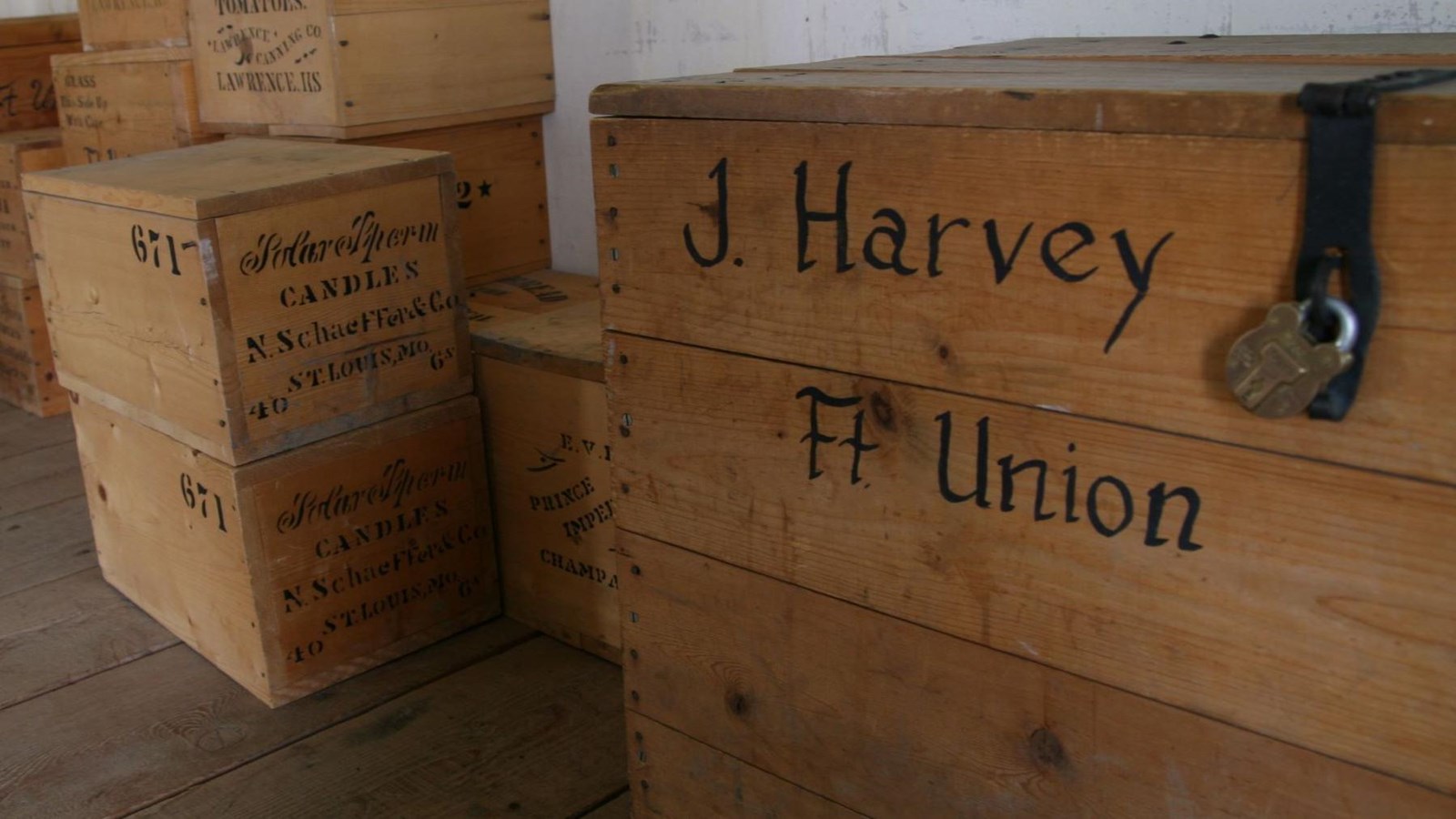Last updated: November 11, 2023
Place
Trade House - Clerk's Office

NPS Photo / Emily Sunblade
Benches/Seating, Historical/Interpretive Information/Exhibits
The Clerks Office often served as a meeting place for the Bourgeois and important American Indian leaders. In October 1851, Bourgeois Edwin Denig and Cree Chief Le Tout Pique met, and Fort Union clerk Rudolph Friederich Kurz sketched the event. The sketch shows Le Tout Pique standing in the center with his arm outstretched, while Edwin Denig remains seated in his armchair.
Such meetings were significant events between the tribes and traders. They established the value of hides and trade goods and helped create lasting alliances and friendships. The exchange of gifts and news over a fine meal, coffee, and tobacco preceded discussions of trade and prices and often took several hours. These gatherings were as much a social affair as they were a business, and their success allowed Fort Union to operate peacefully for 39 years, from 1828 to 1867.
Kurz's sketches of Fort Union life offer a glimpse into the past and were instrumental in the fort's reproduction. The furnishings of the room in the sketch of the meeting with Le Tout Pique serve as the basis for the room's actual furnishings. The paintings on display in the room are replicas of Kurz's works. Edwin Denig himself is depicted in the portrait on the east wall, and Denig's dog, Natoh, is seen in the sketch of the October meeting on the south wall.
Despite the lack of modern technology, such as computers and electricity, the Clerk's Office functioned much like a typical office today. The fur company clerks compiled handwritten ledgers in which they tracked inventories, logged expenses, and balanced accounts. This was necessary to keep the fort running and profitable. The clerks had to be literate and able to do arithmetic. They were also required to have a good understanding of the different trade goods and their sources. Every spring, keelboats and steamboats arrived carrying trade goods from around the world. The clerks' job was to inspect every item and ensure they were in good condition. They also tracked the stock of goods in the fort's warehouse and were responsible for placing orders for future deliveries.
Since new supplies from St. Louis took a year or more to arrive, the fort could not afford to run out. If supplies ran out, tribal trading partners would go to American competitors nearby or Canada's Hudson Bay Company. The clerks were paid quite well for the time, making between $800 to $1,000 per year, the equivalent of $25,000 to $30,100 today. They also received a suit of clothes and a top hat annually as part of their pay. Single-room living quarters were provided in the dwelling range on the west side of the fort's interior. The clerks took their meals at the high table in the Bourgeois House, rather than at the low table with the Engagés or other lower status workers. The Bourgeois House was a place of luxury and comfort, furnished with the finest china, silverware, and linens. The Trade House was a place of great importance, where the past and present intersected, and where the future of the fort was decided.
Learn More:
Watch an interpretive clerks office talk
Transcript
- Duration:
- 2 minutes, 59 seconds
Learn how the Clerks Office functioned as the brain of Fort Union Trading Post.
